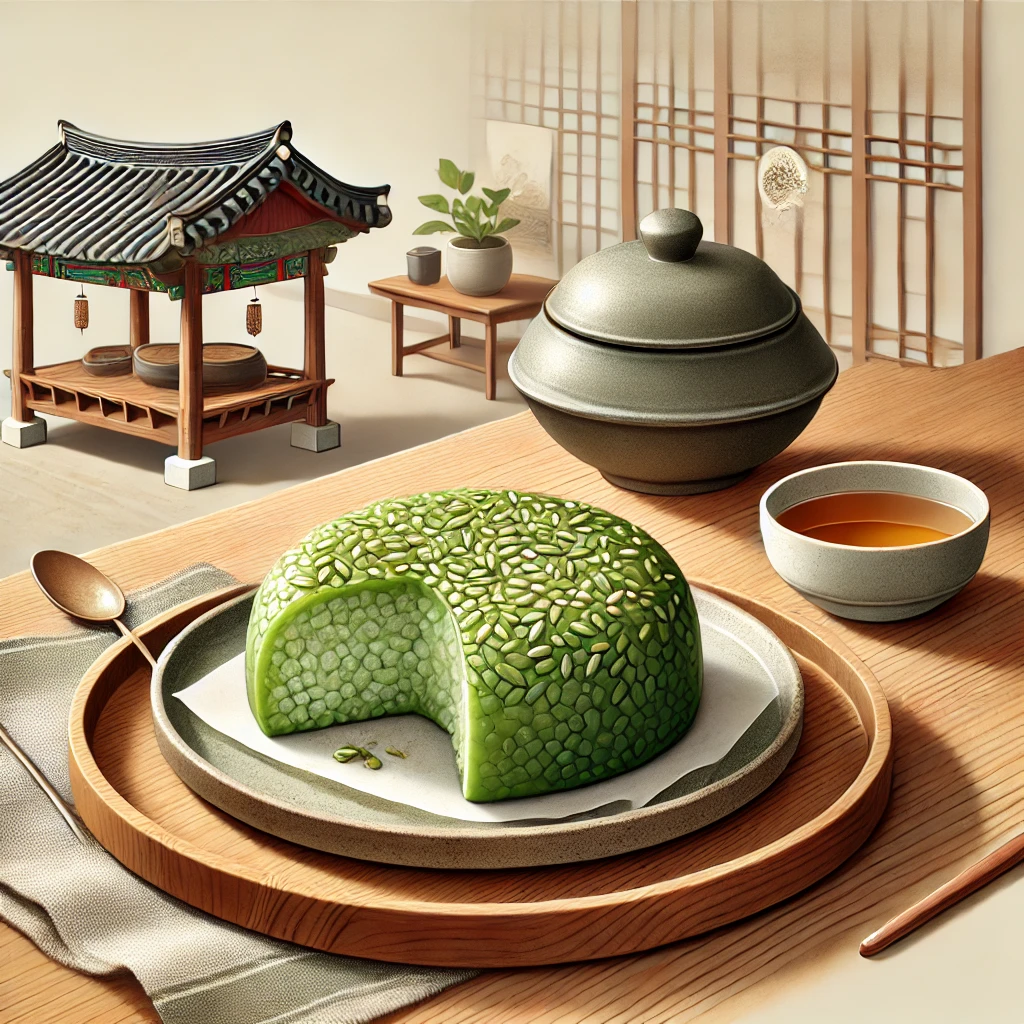Mugwort rice cake nutrition for Diabetes


Mugwort rice cake nutrition, Mugwort rice cake, a traditional Korean delicacy, combines the unique aroma of mugwort with the chewy texture of glutinous rice, making it a beloved treat. However, people with diabetes or kidney disease need to be cautious about consuming it. This article explores the nutritional content of mugwort rice cake and shares tips for safe and healthy consumption for these conditions.
Nutritional Content of Mugwort Rice Cake
Mugwort rice cake is primarily made from mugwort and glutinous rice, containing the following nutrients:
- Carbohydrates: High carbohydrate content due to glutinous rice.
- Dietary Fiber: Found in mugwort, beneficial for digestive health.
- Vitamins: Rich in vitamins A and C, supporting immune function.
- Calcium: Mugwort provides calcium, which supports bone health.
- Iron: Helps in preventing anemia.
Tips for Diabetics to Consume Mugwort Rice Cake
Since mugwort rice cake is made with glutinous rice, it can cause a rapid rise in blood sugar levels. Diabetic patients should take the following precautions:
- Control Portion Size: Limit consumption to 1-2 pieces at a time.
- Check Added Ingredients: Be mindful of added sugars, honey, or red bean paste.
- Blood Sugar Management Tips:
- Prepare low-sugar mugwort rice cake at home using sugar substitutes like stevia or xylitol.
- Add nuts or legumes to increase dietary fiber and reduce blood sugar spikes.
Tips for Kidney Disease Patients to Consume
Kidney disease patients need to monitor potassium and phosphorus intake. Mugwort is naturally high in potassium, so extra care is necessary:
- Manage Potassium Intake:
- Soak mugwort in water to reduce potassium levels.
- Limit the quantity of mugwort rice cake to stay within daily potassium allowances.
- Avoid Sodium: Minimize the use of soy sauce or salt when consuming.
- Choose Low-Protein Options: For those on protein-restricted diets, opt for low-protein mugwort rice cakes.
Healthy Ways to Enjoy
- Make It at Home:
- Use sugar substitutes to reduce sugar content.
- Soak mugwort in water to lower potassium levels.
- Consume in Moderation:
- Eat small portions to minimize the impact on health.
- Maintain a Balanced Diet:
- Pair with vegetables, protein, and low-sodium foods to ensure nutritional balance.
Mugwort rice cake can be enjoyed even by people with diabetes or kidney disease when prepared and consumed correctly. Relish the taste and tradition while making healthy choices!
Recent Posts
How to Read Your Blood Test Results: A Guide for Kidney Disease Management
When managing chronic kidney disease (CKD), regular blood tests are essential. Blood test results help…
How to Follow a Low-Potassium Diet?
Potassium is an essential mineral that helps regulate heart function and muscle contractions. However, for…
How Can Kidney Disease Patients Exercise Safely in the Summer?
Summer’s high temperatures and humidity significantly increase the risk of dehydration and heat-related illnesses during…
5 Essential Principles for Accurate Blood Pressure Measurement – Including Real-Life Cases and Nighttime Hypertension
Why Is Accurate Blood Pressure Measurement Important? Blood pressure (BP) is a vital, dynamic health…
Hypertension: The Silent Killer That Destroys Your Kidneys
Introduction Hypertension is often called the “silent killer.” Without obvious symptoms, it gradually damages major…
A Gene-Edited Pig Kidney in a Human — A Medical Miracle Becomes Reality
🐷 A Pig’s Kidney in a Human Body? Sounds like science fiction — but in…
